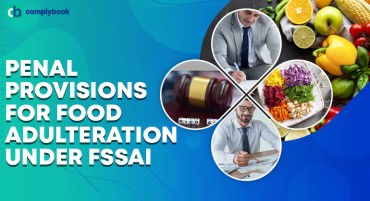

Overview of Copyright License
Copyright deals with the rights of intellectual creators in their creation. The copyright law in particular deals with the forms of creativity, concerned essentially with mass communication. The Copyright Act, protects original dramatic, literary, musical and artistic works and cinematograph films and sound recordings from unauthorized uses. There is no copyright protection for procedures, ideas, methods of operation or mathematical concepts as such.
Copyright secures certain minimum safeguards of the rights of authors over their creations, thereby rewarding and protecting creativity. Creativity being the keystone of progress, no civilized society can afford to avoid the primary requirements of encouraging the same.
According to Section 13 of the Indian Copyright Act, copyright subsists in dramatic, artistic, musical works as well as cinematographic films and sound recordings. The Copyright Act as such does not define the term “originality” but the Indian courts have relied on various doctrines laid down by the foreign courts.
Section 11 of the act provides for the establishment of the Copyright Board and empowers the Central Government to constitute the same consisting of Chairman and 2 other members. It has many important functions, such as:
- Settlement of disputes,
- Granting of licenses, etc
Registration of Copyright
Copyright is an automatic process once the original work is created and it does not need any formality. However, certificate of registration of copyright and the entries made therein serve as prima facie evidence in a court of law with reference to dispute relating to ownership of copyright. The procedure for the registration under the Copyright Act is provided under Chapter VI of the Copyright Rules, 1956. The procedure for registration is as follows:
- Application for registration is to be made on Form IV including Statement of Particulars and Statement of Further Particulars as prescribed in the first schedule to the Rules ;
- Separate applications should be made for registration of each work;
- Each application should be accompanied by the requisite fee prescribed in the second schedule to the Rules ; and
- The applications should be signed by the applicant or the advocate in whose favor a Power of Attorney has been executed. The Power of Attorney signed by the party and accepted by the advocate should also be enclosed.
Licensing Of Copyright
Chapter VI containing Sections 30-32B deals with Copyright Licenses which are as follows:
1. Voluntary License/Licenses by Owners of Copyright: Section 30 of the Copyright Act authorizes the owner of the copyright in any existing work or the prospective owner of the copyright in any future work to grant any interest in the right by license in writing by him or by his duly authorized agent. However, in the case of a license relating to copyright in any future work, the license shall take effect only when the work comes into existence.
2. Compulsory License withheld from the public: Section 31 specifies that of at any time during the term of copyright in any Indian work which has been performed or published in public, a complaint is made to the Copyright Board that the owner of the copyright in the work has refused to allow or republish the reproduction of the work or has refused to permit the performance in public of the work and by reason of such refusal the work is withheld from the public or has refused to allow communication to the public by broadcast of such work or recording, on terms which the complainant considers reasonable, the Copyright Board, after giving to the owner of the copyright in the work a reasonable opportunity of being heard and after holding such inquiry as it may deem necessary, may, if it is satisfied that the grounds for such refusal are not reasonable, direct the Registrar of Copyright to grant to the complainant the license to republish the work.
3. Statutory License for the broadcasting of literary and musical work and sound recording: Section 31D f the act requires that any broadcasting organization desirous of communicating to the public by way of performance or by the way a broadcast of musical work or literary work and sound recording which has already been published may do so subject to the fulfillment of prescribed conditions.
4. Termination of License: Section 32B of the act deals with termination of licenses and specifies that if any time after the granting of a license, the owner of the copyright in the work or any person authorized by him publishes a translation of such work in the same language and which is substantially the same in content at a price reasonably related to the price normally charged in India for the translation of works of the same standard on the same or similar subject, the license so granted shall be terminated.
Fair Use Exemption
Fair use is a provision of copyright law that permits the use of a copyrighted work without authorisation from the copyright holder under specific circumstances. News reporting, parody, and teaching are some instances that could qualify as a fair use. Fair use is assessed on a case to case basis and how it impacts the market and how much of the original work is used.



